Kettlebell STRONG!’s goal is to get you brutally strong with a pair of kettlebells and one expertly executed exercise: the Clean and Press. Minimalism at its finest.
Written some seven years ago by Geoff Neupert, former StrongFirst Certified Master Instructor, Kettlebell STRONG! is now offered through our StrongFirst online training platform. From SFG II candidates and strength aficionados to individuals who simply prefer double kettlebell training, we get many questions. Who is Geoff? What does the programming include? Given what we’ve learned about mitochondrial functioning since its original release, are the skills and programs still valid? How does it fit within the Strong Endurance™ framework? And is it right for me?
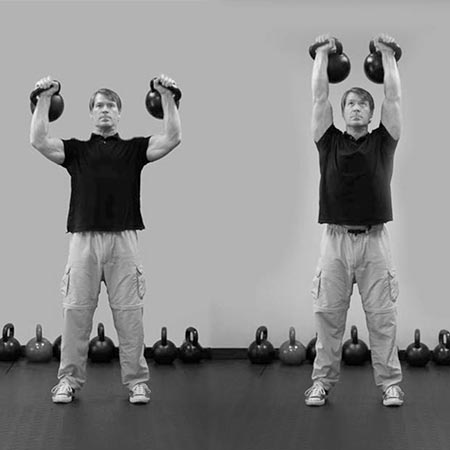
Brett Jones, StrongFirst’s Director of Education, asked me to write an overview of Kettlebell STRONG! with a “retrospective” of what, if anything, I would update, inside the programming. Let me first set the stage with some background.
Why Practice What I Teach?
My name is Geoff Neupert. I’ve been in the kettlebell “game” since having earned my first kettlebell instructor credentials in 2005. I was promoted to Master RKC in early 2010, just before the release of my book, Kettlebell Muscle. When Pavel formed StrongFirst, I followed and was a StrongFirst Certified Master Instructor until 2014, when I stepped down for personal reasons—to devote more time to my growing family, because I had returned to school full-time, and to grow another business. In April 2016, completely burned out from the fitness industry, I retired. But having had sufficient time to restore, I returned in mid-2019.
My athletic background is college wrestling and Olympic-style weightlifting—I was a state champion and National Championship qualifier in O-Lifting. And of my 30-year lifting history, I spent most of the first 20 recovering and working around some pretty major orthopedic injuries—broken bones, dislocations, compressed nerve roots, cartilage damage—that sort of thing.
Within the greater kettlebell community, I was best known for my strength and fat loss programming. My approach was very much influenced by my own athletic background and early professional experience training college athletes. In Olympic-style lifting, we require extremely high power outputs that necessitate high levels of maximum strength. Fatigue interferes with achieving both of those things. In contrast, wrestling is a power-endurance sport—explosive movements like takedowns followed by lulls in the action, like riding time. A wrestler must train to overcome the effects of hydrogen ion and lactic acid accumulation.
So my programming for performance has always been geared toward maximum force production and minimizing fatigue, regardless of the goal. I always believed the stronger, more powerful athlete—skills being equal—wins.
About Kettlebell STRONG!
With that background and experience, I released Kettlebell STRONG! in late 2012 as a DVD plus manual instructional series. The package also contained a multi-phase strength program, called the “Strong!” program, and a simple (but not easy) conditioning program called the “One” program.
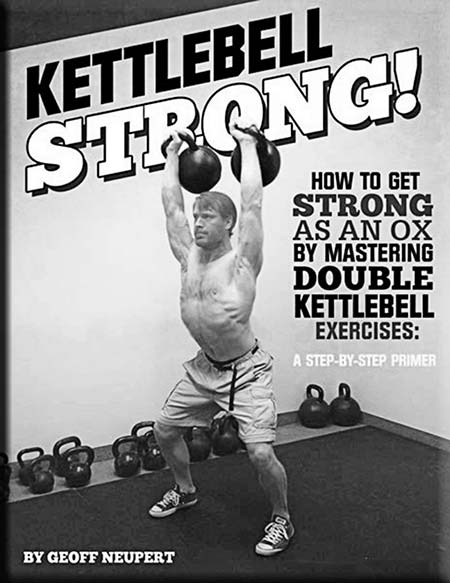
The premise of Kettlebell STRONG! is that you can get brutally strong with one pair of kettlebells by repeatedly performing one compound exercise well—the Clean and Press.
This process is detailed in the multi-phase, multi-mechanism “Strong!” program.
The Strong! Program
There are three different training cycles within the “Strong!” program.
The first is an 8 to 12-week block that trains your strength, based upon your 4 repetition maximum (RM), keeping the number of repetitions low—between 1 and 3—and the number of sets high. Rest between sets is “… as necessary…” with the goal being “… to make each and every rep.” Auto-regulation at its heart.
Sounds strikingly similar to EMOM A+A (every minute on the minute, alactic + aerobic) protocols from Strong Endurance™, doesn’t it?
The second cycle trains work capacity and/or hypertrophy. It has two variations: the “Short Course” and the “Slow and Steady.” The first variation has you double your starting volume in 4 to 6 weeks. The second, is more merciful, and spreads it out over 16 to 24 weeks.
Both are designed to make your old 4RM starting weight feel like a toy.
However, because its goal is to build muscle mass and/or build your ability to do and recover from work, there’s a stricter rest between sets—1 to 2 minutes. The concept is “to get a pump with a heavy weight.”
This does start to get mildly glycolytic, but if you choose the “Slow and Steady,” it is not intolerably so. Your body adapts very well, and those who stick with it are rewarded with the “Holy Grail” of strength training—more muscle mass, increased strength levels, and (usually) lower body fat levels—though this will be strongly influenced by dietary choices. This is achieved in around ninety minutes per week, regardless of age or training experience.
The “Short Course” is more extreme, brutal, demanding, and definitely for those with superior recovery abilities and less demanding schedules. (I do NOT recommend this for parents of small children, or any children really because you should be able to get A LOT of sleep.) The majority of folks opt for the “Slow and Steady” for this reason.
The third and final phase is a 5 to 8-week program that capitalizes on all the work you’ve done to date, and is focused on fat loss. It’s a density-based program—you will do the same amount of work in less time—which actually means more total work. To do this, you’ll reduce your rest periods.
Does lactic acid accumulate? Absolutely. And that’s for a very specific purpose: growth hormone, your most powerful fat burning hormone, is released in the presence of lactic acid.
Do you need to do this last phase? Absolutely not.
In fact, most people stop after the “Slow and Steady” and start over, using heavier kettlebells, with their leaner, more muscular bodies.
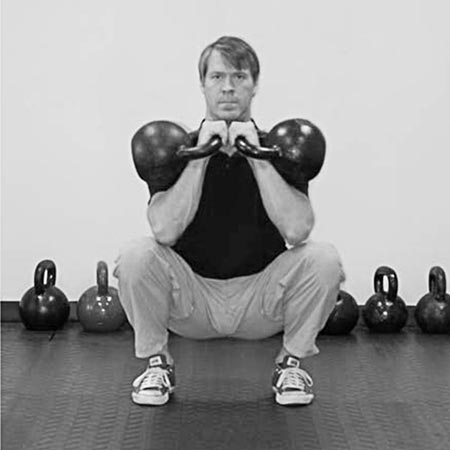
The “One” Program
The “One” program is a different beast altogether. It’s a conditioning program meant to be performed using the Double Swing. This is because the Double Swing is very low-skill compared to the Double Clean and Press, and has a much shorter stroke, so less can go wrong. Both of these attributes—low skill and short stroke—mean there is less focus required. Perfect for a conditioning exercise.
It starts out mildly “fast glycolytic” and goes full-blown glycolytic quickly. It is definitely a challenge…but not necessarily “fun.”
Hindsight 2020: Part I—Conversion to AGT
Seven years later, what if anything would I change? And how should you use the “Strong!” and “One” programs if your main focus is anti-glycolitic training (AGT)?
Quite frankly, I wouldn’t change anything about the “Strong!” program. It does what it’s designed to do and has stood the test of time for those who have followed it.
However, if AGT is your primary training focus, there are two easy ways to make the program work for you:
- Stay with the first phase of the program and recycle it with a heavier pair of kettlebells.
- Double or even triple the prescribed work sets over the course of time and use it as a pure A+A program.
The “One” program is a different story.
First, in light of the insights learned in and from Strong Endurance™, the “One” program can truly be considered a glycolytic peaking program—and a longer one at that. It would be very good prep work for a 5-minute snatch test to save the hands from the rigors of snatching.
Second, in order to modify it for AGT purposes, since it’s already on a one minute clock, I’d turn it into a low-rep EMOM program, extending the duration of the program to build mitochondrial density.
Third, once you’ve built up significant “anti-acid” capacity using AGT protocols, then bolt on the original version for a peaking cycle.
Hindsight 2020: Part II—Mixing the Two
If you’d like to mix the two training strategies and lean towards the AGT side, I recommend the following:
- Do the first phase of “Strong!.”
- Then, double or triple the volume and continue running the cycle, making it a true A+A program.
- Then, you will have built enough capacity to survive the “Short Course”—so run that as a 4-week cycle. It should be pretty easy as the first few training sessions will be a de-load.
- Then, if you’re up for it, you should be fully prepared to run the last fat loss program. Run it either for a full 4 weeks, or jump in on Workout #7 and run it as a glycolytic peaking program.
Finally, in the Kettlebell STRONG! manual, I describe some ideas for combining the two programs. The “2020” AGT-friendly variation would simply alternate different cycles of “Strong!” and “One:” 8 weeks of the first phase of “Strong!” followed by 8 to 12 weeks of “One,” modified to a low-rep EMOM program. Upon completion, run the original “One” cycle as a glycolytic peaking cycle.
If you decide to apply any of these variations to your Kettlebell STRONG! training, please let StrongFirst know how they worked for you by commenting below or on the forum.
How Do You Know If You’re Ready to Tackle Kettlebell STRONG!
Here are some “milestones” you should be able to accomplish:
Rack Hold
- For Men: Hold half of your bodyweight with a pair of kettlebells in the rack position for 30s minimum.
- For Women: Hold a third of your bodyweight with a pair of kettlebells in the rack position for 30s minimum.
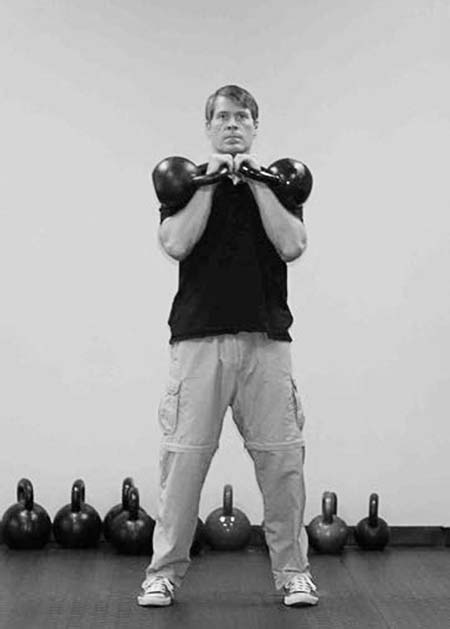
Press Strength
- For Men: Press half of your bodyweight with a pair of kettlebells at least once. Preferably 3 times or more.
- For Women: Press one third of your bodyweight with a pair of kettlebells at least once. Preferably 3 times or more.
- If you can’t do one or either of those, then follow the program below until you can.
The “Prep Strong!” Pressing Programs
- Use a pair of kettlebells you can [comfortably] press 5 times, but would struggle to get 6 reps with.
- Perform one clean, followed by the prescribed number of presses.
- Choose one of the two training plans below, based on how well you recover:
Plan A: If You Have Good Recovery, Use This Plan
WEEK #1
- Session #1: 10 sets of 2 reps.
- Session #2: 8 sets of 3.
- Session #3: 6 sets of 4.
WEEK #2
- Session #1: 8 sets of 3 reps.
- Session #2: 6 sets of 4.
- Session #3: 5 sets of 5.
WEEK #3
- Session #1: 6 sets of 4 reps.
- Session #2: 5 sets of 5.
- Session #3: 4 sets of 6.
WEEK #4
- Session #1: 5 sets of 5 reps.
- Session #2: OFF.
- Session #3: Perform a Rep Max (RM)* with the same pair of kettlebells you’ve been using.
Plan B: If You Struggle to Recover, Use This Plan
WEEK #1
- Session #1: 10 sets of 2 reps.
- Session #2: Repeat Session #1.
- Session #3: Repeat Session #1.
WEEK #2
- Session #1: 8 sets of 3 reps.
- Session #2: Repeat Session #1.
- Session #3: Repeat Session #1.
WEEK #3
- Session #1: 6 sets of 4 reps.
- Session #2: Repeat Session #1.
- Session #3: Repeat Session #1.
WEEK #4
- Session #1: 5 sets of 5 reps.
- Session #2: Repeat Session #1.
- Session #3: Repeat Session #1.
WEEK #5
- Session #1: 4 sets of 6 reps.
- Session #2: Repeat Session #1.
- Session #3: Repeat Session #1.
WEEK #6
- Session #1: 5 sets of 5 reps.
- Session #2: OFF.
- Session #3: Perform a Rep Max (RM)* with the same pair of kettlebells you’ve been using.
* A Rep Max (RM) is one set of as many reps as possible performed to technical failure—where another rep would cause you to change your technique.
Notes for Both Prep Programs
- Train 3x week, either M-W-F, Tu-Th-Sa, M-W-Sa or Tu-Th-Su.
- Warm up however you want, but don’t get tired.
- Rest as much as necessary between sets to get the prescribed reps.
- Do light mobility work or walk on non-training days, but nothing else.
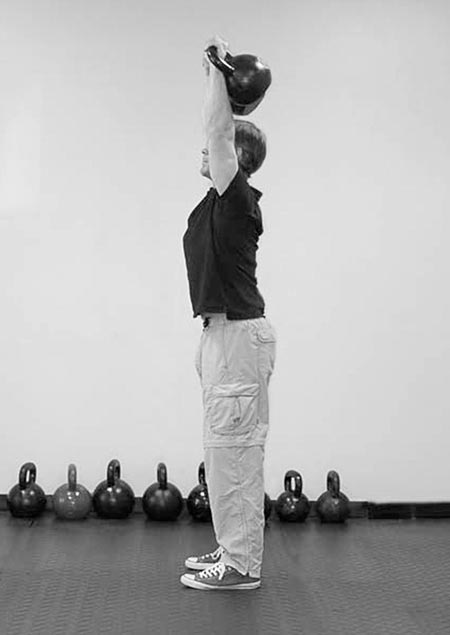
There You Have It…
Everything you need to know about the “Strong!” program inside Kettlebell STRONG!, how to modify it to meet your anti-glycolitic training goals, the qualification criteria for starting the program, and two different ways to prepare yourself to meet those criteria so you can reap the benefits from the program itself.
Be Strong! My Friend.
Learn More
Get your Kettlebell STRONG! online training course here.
SFGs can also master how to perform and teach double kettlebell skills by attending their StrongFirst SFG Level II instructor certification.
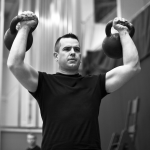


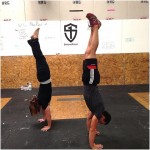

Hi Geoff,
You mention that “in order to modify it [One program] for AGT purposes, since it’s already on a one minute clock, I’d turn it into a low-rep EMOM program, extending the duration of the program to build mitochondrial density”.
1a) How many reps are considered low in EMOM double swings? Is it 10 double swing reps EMOM prescribed like Q&D ?
1b) Can ‘One’ be done with 5 double swing reps every 30 seconds like Q&D?
2) How long can the duration of the One protocol be extended? I’m aiming for endurance so is 25 min. okay with double swings?
Thanks for this program!
Asking questions are actually good thing if you are not understanding anything fully, except this
post presents pleasant understanding yet.
Hello Geoff, great article – thanks!
At the moment I‘m working your Simple Strength Protocol, wich was published here few years ago. C&P and FS were the exercises. After I’ll have finished it with 2×28, I’ll switch to Kettlebell Strong! protocol.
@Sergej – great! Please let me know of your results.
Great to have you back Geoff.. been doing easy strength am heading back to KB strong when done.. semper fi
@Scott – Thanks! Let me know how you do with “Strong!”.
Hello Geoff
Does the kettlebell strong program on the strong first skill train. Offer both the one and strong program that you spoke about in your article?
Yes, they are both included.
Dry Fighting Weight has become one of my absolute favorite programs. The double C&P is now my favorite exercise and forms the basis for all of the training I have done over the past six months. I will be starting Strong! tomorrow and am really looking forward to it.
@Bunn – Glad you like DFW. The double C+P will get you seriously strong. Please post your results with “Strong!” in the forum. Thanks!
Just to be clear – this is (for example, the first day of week 1) 10 sets of 2 clean and presses right? There’s a line there that implies that you do one clean and the prescribed number of presses.
J Mitchell – yes, if you are using the “Prep Strong!” programs in this article then no, 10 sets of 2 is not Clean AND Presses. It’s 10 sets of 1 Clean and 2 Presses. The focus is on the Press.
Hope that clears things up for you.
I really appreciate this article. It has been brutally obvious to me that the double kettlebell press adds a lot of strength and stability to my judo and competitive kendo training. There is no question at all here. I shied away from using the clean and press as I didn’t know if the double clean had much merit as an exercise. This article cleans up (pardon the pun) a lot of my misgivings about the clean&press movement together with doubles, and based on my experience using the double press to get stronger for my martial arts and sports, I trust the advice here. Another excellent and important piece of advice is on the weight that is to be used, and it is comforting to see that half my bodyweight is sufficient, as I was feeling insufficient pressing the two 24kg bells (half my bodyweight when put together) rather than two 32s.
I think this is my favourite Strong First article of all time.
I am having a hard time really following S&S given all my martial arts training, and I think this double C&P exercise will be my main thing for the time being.
Kozushi –
Glad to have helped “clean” things up for you. 🙂
Please post your results in the forum.
Thanks.
Just felt like recording that I have pressed the 40kg bell on both sides (separately, not as doubles!) before on a few occasions. I regularly do single presses with the 32 to stay strong.
The press is so important to maintain shoulder mobility and strength. I lost it in both shoulders for a few years, so I know how important it is to keep the shoulder rotators strong.
Geoff, many thanks for presenting this clearly. It was exactly what I was looking for.
I’m definitely going to do this program, once done with S&S, and perhaps a cycle of ROP prior to Strong!
Molson,
Happy to help!
Hello! Where can i get the book?
Rofl,
It’s not a book, but a digital video course with a PDF download. You can get it right here on the StrongFirst site:
https://strongfirst.skilltrain.com/Pages/Public/Course?enc=4vz61nl5a%2bBjtUfz4A9FmA%3d%3d
Hope that helps.
What format is this program in?
Chris,
It’s digital.
Welcome back, Geoff! I know you didn’t intend it but I just did the 30s rack hold immediately followed by the presses. That was… interesting. Regardless, I’ve gone back to Strong multiple times and doubles C&Ps are now my favorite movement. You feel them everywhere!
Thanks, Joe!
Glad “Strong!” and the C+P’s are still working for you.
Great to see you back Geoff!! I’ve loved doing KB Muscle (maybe we’ll see that reintroduced in the near future), Strong! & One in the past 2-3 years, as they’ve been staples in my routine. I find finishing one leads me wanting to go to the next, and the next, etc…. I am happy to report that my 24’s felt like toys last spring doing Strong! Just an amazing program all around.
I am currently working on Timeless Simple, which should peak sometime this summer. I’ll probably look to invest in a new pair of 28’s & another 32 so I can revisit Strong or KB Muscle with higher weights. Thanks again for all your insights!!
Thanks, Dr. Fred!
Great to hear about those 24s – as they should be!
Can’t wait to hear about those 32s. 🙂
Thanks, John!
Great article!
Marco,
Glad you liked it!
We dont deserve this! Thank you Geoff!
Not sure what you mean, Stefan, but glad you liked it!
I have been doing this program on and off since around 2011. I haven’t done this program in around a year.
Last week I was going through my old journals trying to find some old routines to get me inspired again. Came across this one – and started on it again – I couldn’t remember where I got it from and it’s been bugging me all week! What timing.
Going through my notes this is a great program (2x 28kg’s) and I remember getting excellent results but I really struggled to combine it sensibly with BJJ training 4-5 days a week. This is a good refresher so I’ll try it again!
Louis,
Timing is everything. 😉
If you’re doing BJJ 4-5x week, treat “Strong!” as in In-Season program and only do it twice a week – Mon-Thurs, Tues-Fri sort of thing. If you compete on Saturdays, Sun-Wed or Mon-Thurs is the preferable schedule.
Hope that helps.
I have been using kettle bells for a long time but would like to try your program. I’m a little confused, though. In week one, is each session on a separate day, or all three sessions in one day? Thanks.
Bennie,
Each session is a separate day – preferably alternating days – Mon-Wed-Fri, Tue-Thu-Sat type schedule.
Hope that helps.
This must be a sign, because I was just watching a reality show,about weight lifting. I just said to myself I would like to do weight lifting, then I saw your post.
Adrienne,
Glad to help with the “confirmation.” But if you’ve never lifted weights before, “Kettlebell STRONG!” is not the place to start.
I recommend “Simple & Sinister.”
Hope that helps.
Hi Geoff,
Great article. I am currently using the 48kg for s&s and am looking to take a detour and put on some extra mass. Would this program be appropriate for that goal?
Thanks,
Mark
Great to see you back involved Geoff!